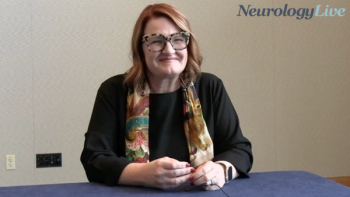
Cardiac Amyloidosis: Pacemakers and Defibrillators
John L. Berk, MD: Pacemaker or defibrillator, Dr Witteles?
Ronald Witteles, MD: If somebody needs a pacemaker, that part is fairly straightforward. If they have symptomatic bradycardia like anyone, they should get a pacemaker. A heart block as I mentioned before is common, particularly in intracranial retina amyloidosis; it’s common, and patients will often not need a pacemaker.
The fibrillator issue is a much tougher question. So traditionally, the feeling in a patient with cardiac amyloidosis was not to place defibrillators. I think that was for a couple of reasons. One was that in an era before effective therapies for both AL [amyloid light-chain amyloidosis] and transthyretin amyloidosis, the prognosis was quite poor, particularly in patients with AL amyloidosis. And the idea was, why would you want to convert what might be a peaceful sudden death into a more gruesome heart failure death with getting a bunch of shocks at the end of one’s life. Also it was found that it wasn’t that infrequent that patients would get shocked appropriately for ventricular arrhythmia, and it wouldn’t resuscitate them.
But, again, that was when you would dive into the data. That was largely putting defibrillators in patients who met the traditional primary prevention indications for defibrillators, namely EFs [ejection fractions] under 35%, and it was mainly in AL populations. And by the time you get to a patient with a very low EF with AL amyloidosis, you really have a quite terrible prognosis, not just from arrhythmia and sudden death but from progressive heart failure.
So, I think we and others have then looked at putting the defibrillators in and not waiting till meeting EFs below 35%. But take a population who has a reasonable life expectancy—at the very least, a minimum of a year but hopefully more than that. And, B, try to do it based on screening with ambulatory telemetry with something like a Zio Patch. And if they do have a significant burden of ventricular tachycardia on that, we will typically offer treatment with a defibrillator. We’ve clearly seen higher rates of need for appropriate shocks in patients with AL those with than transthyretin, so we’re much more likely to recommend for patients in the former group, and then you want to time it with their chemotherapy. But I do think it’s a big mistake to have a blanket policy of not putting defibrillators in patients, or we’re not putting primary prevention defibrillators in patients, because certainly I can say from our own experience, clearly, it has saved a number of patients’ lives who have in some cases, lived for many years thereafter.
Akshay S. Desai, MD, MPH: John, before we move on, if there is a need for AV [atrioventricular] junction ablation in these patients, have you moved to single-chamber pacing, or do you think biventricular pacing is a better option for these patients?
Ronald Witteles, MD: We really try to avoid RV [right ventricular] pacing in general, and so either AV ablation or for complete heart block. And, again, they won’t necessarily meet the classic indications for CRT [cardiac resynchronization therapy]. But you’re talking about people with impaired ventricles, brachial and diastolic dysfunction, that add in the synchrony of RV pacing, I think is a mistake.
John L. Berk, MD: Then ventricular-assist devices?
Mazen Hanna, MD: Yeah. So we had some experience with putting in ventricular-assist devices in patients with cardiac amyloidosis. We put in 6 continuous flow the newer-generation ventricular-assist devices—and probably in the last 10 years; 2 patients had AL cardiac amyloidosis, who were not transplant candidates. There was a lady in her 50s who was basically balloon-pump dependent. There’s a cohort of these patients with AL that can go into cardiogenic shock from diffuse intramural coronary deposition. Actually, their ventricles tend to not be small, they can be even normal to mildly dilated. This particular patient was bailed out with a left ventricular-assist device. She lived for 4 years, was receiving chemotherapy and the first 3 years were quite good. During the last year, she had recurrent infections and complications.
Another patient with AL cardiac amyloidosis was 75. Again, the patient presented the same way. He was balloon-pump dependent, had cardiogenic shock, very toxic light-chain levels, and we put in … a continuous-flow VAD [ventricular-assist device], and he’s had it now for 4 1/2 years. He’s had some complications, but he went on to get chemotherapy and he’s survived 4 1/2 years.
So those are the 2 longest survivals that we know of. And as far as TTR, we put them in 2 wild-types and in 2 patients with the V122I mutation. And 2 of those patients were successfully bridged to transplant, and the other 2 died at varying intervals. The 12-month survival was 100%. So I think it’s feasible.
And 2 of the biggest issues are, what is the size of the LV [left ventricular] cavity? As you know, patients with cardiac amyloidosis sometimes have smaller ventricles. They certainly aren’t dilated most of the time. So will the cannula in the left ventricle or apex fit without impinging on the trabecular or the walls? Are you going to get a lot of suction events and arrhythmias? The RV is often dysfunctional and stiff. Will these patients have severe problems with right ventricular failure?
Luckily, we have not had those issues. However, our typical rule is we will not implant a left ventricular-assist device in a patient with cardiac amyloidosis with an LV and diastolic dimension of less than 4.4 mm. That’s kind of where we’ve gone, 4.4, 4.5 mm. So, I’m not sure what we’re doing at Brigham and Women’s Hospital.
John L. Berk, MD: Dr Desai, a short comment.
Akshay S. Desai, MD, MPH: Right. I would just make the argument that I think those are wonderful examples. I think in general, when we’ve looked at these patients, the number that meet those criteria is a relatively small fraction of the general whole. So, I think on the whole, it’s not a great strategy.
I will say that the 1 thing that’s helped these patients has been a transition in our listing system for transplant. And I think, particularly for the patients with TTR, those with isolated cardiac amyloidosis with wild-type TTR, or those patients now are advantaged by a listening system that moves them up in the status priority listing for transplantation.
And I think obviates in some cases, the need for a VAD as a bridge to transplant. I think our direct-to-transplant strategy in patients with amyloidosis who are eligible for a transplant is now increasingly possible, and hopefully limits the need for the out-of-the-box thinking that Dr Hanna’s outlined. But it’s wonderful to know the examples exist, or the predicate exists, to do that when it’s possible.
Mazen Hanna, MD: I need to make sure I emphasize that they are out-of-the box examples. I completely agree that this is not a strategy we should be routinely employing, and this is at very specialized centers and a very specialized small percentage of cases.
Newsletter
Keep your finger on the pulse of neurology—subscribe to NeurologyLive for expert interviews, new data, and breakthrough treatment updates.


































